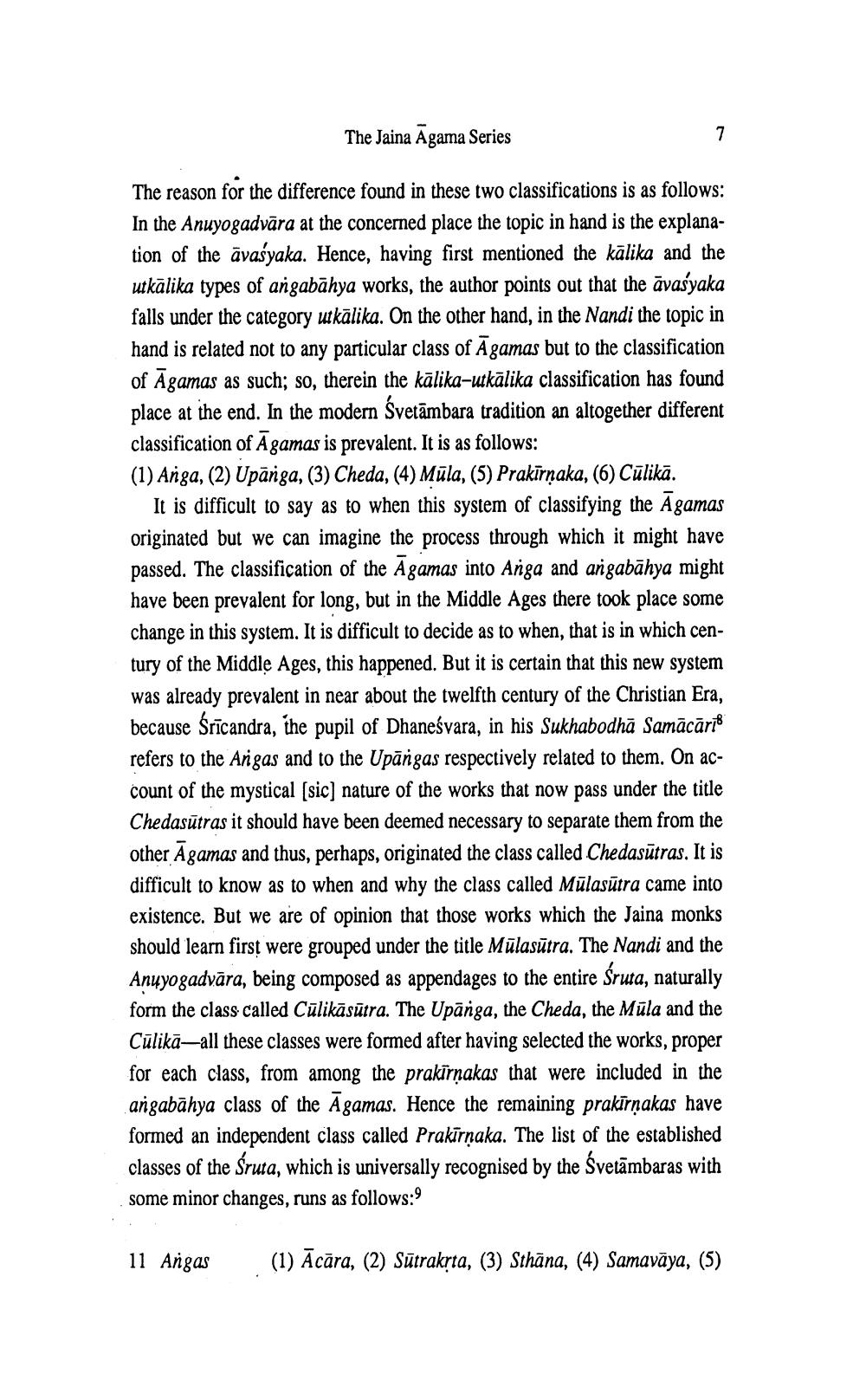Book Title: Jaina Agama Series Author(s): Jambuvijay Publisher: Jambuvijay View full book textPage 7
________________ The Jaina Agama Series The reason for the difference found in these two classifications is as follows: In the Anuyogadvāra at the concerned place the topic in hand is the explanation of the avasyaka. Hence, having first mentioned the kalika and the utkalika types of angabahya works, the author points out that the avasyaka falls under the category utkälika. On the other hand, in the Nandi the topic in hand is related not to any particular class of Agamas but to the classification of Agamas as such; so, therein the kalika-utkālika classification has found place at the end. In the modern Śvetambara tradition an altogether different classification of Agamas is prevalent. It is as follows: (1) Anga, (2) Upanga, (3) Cheda, (4) Mūla, (5) Prakīrṇaka, (6) Cūlikā. It is difficult to say as to when this system of classifying the Agamas originated but we can imagine the process through which it might have passed. The classification of the Agamas into Anga and angabahya might have been prevalent for long, but in the Middle Ages there took place some change in this system. It is difficult to decide as to when, that is in which century of the Middle Ages, this happened. But it is certain that this new system was already prevalent in near about the twelfth century of the Christian Era, because Śrīcandra, the pupil of Dhanesvara, in his Sukhabodhā Samācārī refers to the Angas and to the Upangas respectively related to them. On account of the mystical [sic] nature of the works that now pass under the title Chedasūtras it should have been deemed necessary to separate them from the other Agamas and thus, perhaps, originated the class called Chedasūtras. It is difficult to know as to when and why the class called Mūlasūtra came into existence. But we are of opinion that those works which the Jaina monks should learn first were grouped under the title Mulasūtra. The Nandi and the Anuyogadvāra, being composed as appendages to the entire Śruta, naturally form the class called Culikāsūtra. The Upanga, the Cheda, the Mula and the Culika-all these classes were formed after having selected the works, proper for each class, from among the prakīrṇakas that were included in the angabahya class of the Agamas. Hence the remaining prakīrņakas have formed an independent class called Prakīrṇaka. The list of the established classes of the Śruta, which is universally recognised by the Svetambaras with some minor changes, runs as follows:9 (1) Acāra, (2) Sūtrakṛta, (3) Sthāna, (4) Samavāya, (5) 7 11 AngasPage Navigation
1 ... 5 6 7 8 9 10 11 12
